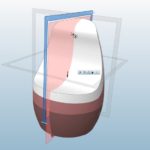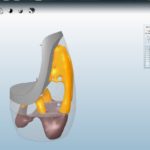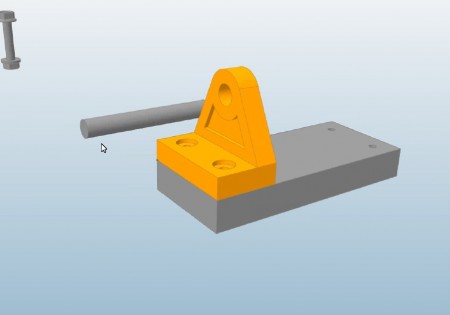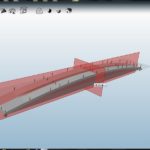Continued from page 1
CAD Connections
Finally, operability is always a critical issue in CAD and 3D workflows and version 8.5 improves here as well. As Mazzardo said, “we have added many new industry standard CAD file formats from the best software in the product design and engineering market. We can now directly import key formats like Catia v4 and v5, SolidWorks, Pro/ENGINEER and many others.”
Advertisement
New formats include direct import of H3D, SAT (ACIS), Catia v4/v5, Parasolid (x_t and x_b), Pro/ENGINEER, SolidWorks, and UGS NX.
“Other programs require additional costs for these import/export translators,” said Mazzardo. “With solidThinking 8.5 you get all of these at no extra cost.”
New export capability includes Parasolid native format (x_t and x_b). And finally there is improved import and export for IGES, STEP and STL formats.
solidThinking Inspired v.8 with morphogenesis
When solidThinking, Inc. added their morphogenesis technology in version 8 we were very excited to see its implications on architectural and industrial design. Andy Bartels of solidThinking, Inc. gave us demo and touted its new features. Of these, the most important one, in our opinion, is the ability to apply the morphogenesis algorithms on separate parts of a model.

05 - New morphogenesis technology in solidThinking Inspired 8.5 allows for the separate application of generative technology algorithms on separate parts known as design spaces and non-design spaces.
The reasons for doing this are many. Right of the bat, if you are designing an object, like say a bridge, you may want to focus the “generative” technology on just the structural parts of the bridge. (see image 05) Furthermore, you may want to apply the morphogenesis technology to just various parts at various degrees of influence. (see images 07-08)

07 - the top zone in white is a non-design space object inside Inspired, thus the forces applied to model via the morphogenesis algorithms will not apply this form but pass through it.

08 - The result of a morphogenesis calculation. Slider scales allow the user to alter the "generative effect" or deformation of a part.
One question we had right away was answered quickly by Bartels. “You can apply morphogenesis technology to parts of the model that are non-contiguous. For instance, in this chair (image 07) there is a middle zone (lighter color) which could be assigned to be omitted in the morphogenesis calculation. It would thus pass forces and generative effects through the object to only those parts that are selected to be affected by the generative technology. The net result is an example like this, where the top part of the chair was omitted from morphogenesis calculation. (see image result 08)
Parts are defined as “design” and “non-design” in Inspired. If non-design then morphogenesis doesn’t touch them.
Other improvements include the ability to calculate in pounds now. There is also the ability to allow the user to take in many different parts and rearrange them within Inspired using new smart snaps technology. (see image 09)

09 - Inspired 8.5 supports multiple parts snapping technology, which helps with quick third-party assemblies and assignment of design space or non-design space to overall assemblies.
This last feature is very useful in the iterative design process. A user may get unexpected results coming out of the morphogenesis calculations and want to bring in new models to test out. With this ability of part assembly using smart snaps a user can do this easily on a part-by-part basis.
There is also new push and pull modeling capabilities for turning 2D sketches into 3D design spaces. You can also measure static weight distribution of parts or assemblies on supports.
solidThinking and solidThinking Inspired 8.5 continue to evolve. As a product for use within civil engineering and architecture Inspired 8.5 has become more useful with its new updates, especially the parts snapping and multi-part application of the generative algorithms.
To learn more about solidThink and solidThinking Inspired 8.5 go here: www.solidthinking.com. You will also find more information in the Related Article links (below) and in our Cloud Tag at right.





Reader Comments
[…] recently covered solidThinking Inspired 8.5. Click here to read the In-depth […]
[…] Architosh sitesinde solidThinking Inspired 8.5 hakkında yayınlanan inceleme yazısını okumak için tıklayın […]
Comments are closed.